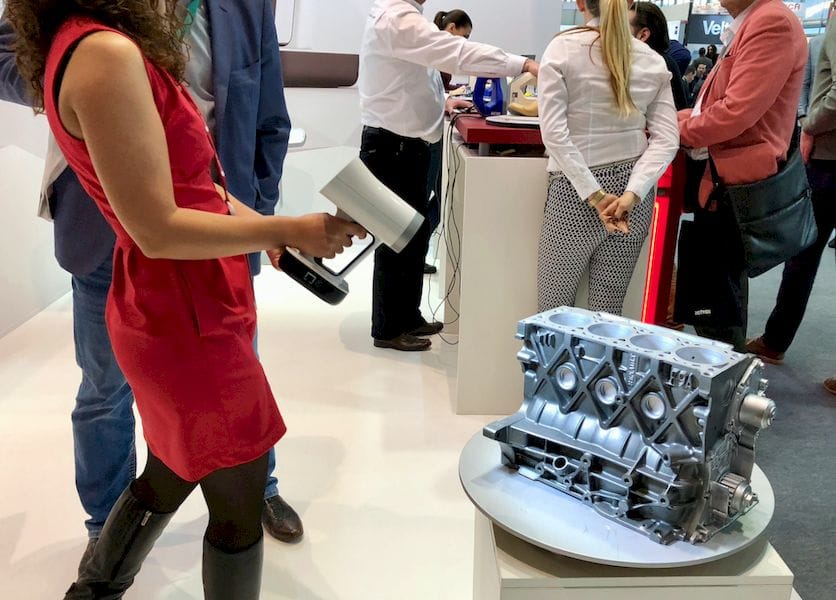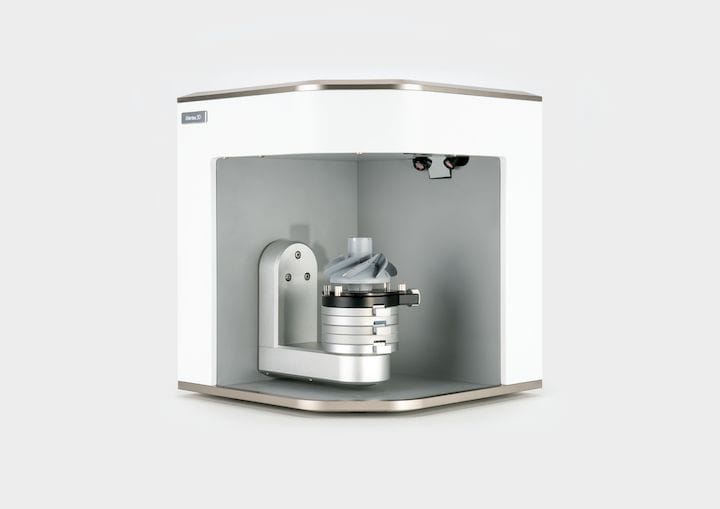
Artec 3D released Artec Studio 15, their latest release of 3D scanning management software.
The California-based company has been producing various styles of 3D scanners for many years, but all of them are controlled through the Artec Studio system. This is notable, as their product line includes not only handheld scanners, but also tripod-mounted devices, tabletop and turntable scanners, a robot-mounted system, and even a 3D scanning booth for capturing misbehaving live subjects. Artec Studio must handle all of the above, and it does so quite well.
Artec Studio 15 Features
As always, a new release contains a number of new features, and Artec Studio 15 certainly has them.
The company seems to be focusing on workflow optimization, as there are a number of features specifically simplifying the workflow steps and speeding up processing time.
They’ve added some interesting features to help organize data collected for processing. In reality, justification of the price of a 3D scanner often implies it will be a busy device, capturing scans on a regular basis. This means there will be many data files to handle, and the new “customer folder” feature should help in this regard.
Artec 3D says the software now includes new “automated workflows” that include more rapid auto-align functionality that runs at twice the previous speed. They’ve also tidied up the user interface and allowed the user to perform some level of interface customization.

They’ve also cooked up some specific speed improvements in the software when handling 3D scans from their Micro tabletop devices, saying:
“Scans can be captured twice as fast as if done manually. By calculating the most effective scanning path, Smart Scanning Mode captures the optimal quantity of surfaces, using the least number of frames, to achieve fully automatic, ultra-high-resolution scans.”
Artec Studio now includes a feature to “align” a 3D scan with a CAD model. This feature could be used for a quality control process, in which a manufactured part is 3D scanned and compared to the baseline geometry in the CAD model.
Artec 3D has also optimized color texture capture by improving the tool’s ability to eliminate “leaked” color textures from behind the scanning subject. This could be of interest to artists and researchers scanning colorful objects, as it could reduce the amount of manual cleanup work required.
Artec Studio 15 Reverse Engineering
Reverse engineering is one of the key applications for 3D scanning, where a missing CAD model is reconstructed by 3D scanning a sample part. Normally this can be a very tedious process, as an operator must visually build each and every portion of the part’s geometry in CAD by overlaying CAD components on the 3D scan. After the CAD model is fully rebuilt, the 3D scan is tossed.
That workflow will become much more simplified with Artec Studio 15, as the software now includes several reverse engineering features. Artec 3D explains:
“After a scan is completed, primitives can be used to extract key geometrical data in a CAD format which can be immediately used in SOLIDWORKS or other CAD software. In addition, Artec Studio 15’s Precise Positioning features lets users position models in the world coordinate system. Correctly positioned models with primitives aligned to the scan data can be exported as popular CAD formats for an easy transition directly into SOLIDWORKS, Geomagic Design X and other CAD software.”
This could be a significant time-saver for those doing repeated reverse engineering jobs.
Those who operate Artec 3D scanners should consider upgrading to the new version to take advantage of these features.
Via Artec 3D
